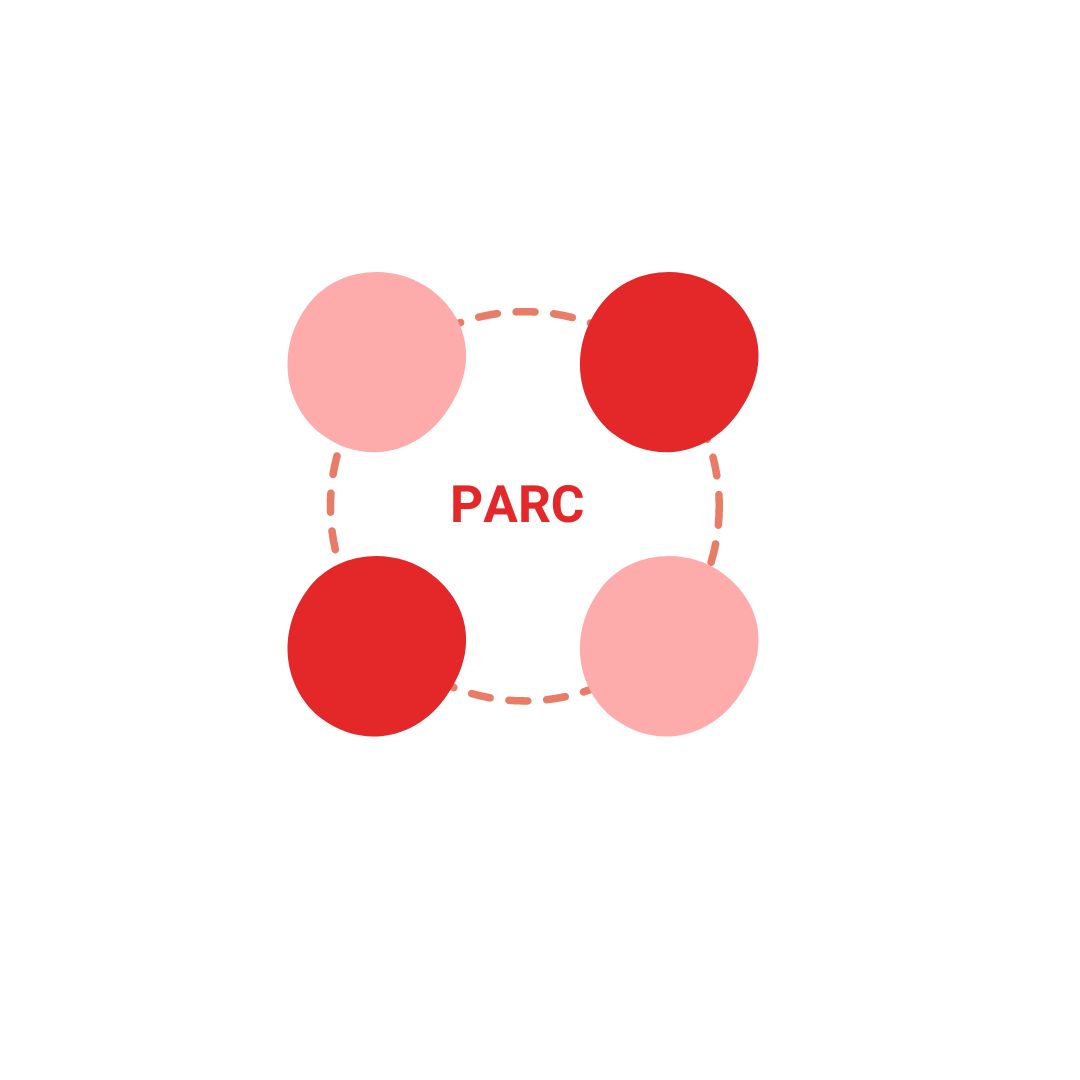What is Predictive Marketing?
Predictive marketing is a data-driven approach to marketing that leverages advanced analytics and predictive modeling techniques to forecast future customer behavior, identify potential trends, and make informed decisions about marketing strategies. It involves using historical data, machine learning algorithms, and statistical analysis to predict how customers are likely to engage with a company’s products or services and then tailoring marketing efforts accordingly. Here are some key aspects of predictive marketing:
Key Aspects of Predictive Marketing
1. Data Analysis:
Predictive marketing relies heavily on data analysis, where large volumes of customer data are collected, processed, and analyzed. This data can include customer demographics, purchase history, website interactions, social media engagement, and more.
2. Predictive Models:
Machine learning and statistical models are used to build predictive models that can anticipate customer behavior. These models can include techniques like regression analysis, decision trees, neural networks, and clustering algorithms.
3. Customer Segmentation:
Predictive marketing often involves segmenting customers into different groups based on their predicted behavior or characteristics. This allows marketers to tailor their messaging and offers to each segment, increasing the relevance of marketing campaigns.
4. Personalization:
By predicting what products or services a customer is likely to be interested in, companies can deliver highly personalized marketing messages and offers. This personalization can lead to higher conversion rates and customer satisfaction.
5. Lead Scoring:
Predictive marketing can be used to score leads based on their likelihood to convert into customers. This helps sales and marketing teams prioritize their efforts and allocate resources more efficiently.
6. Churn Prediction:
Predictive models can also forecast which customers are at risk of churning or leaving a company. This allows businesses to take proactive steps to retain these customers, such as offering special incentives or tailored retention strategies.
7. Campaign Optimization:
Predictive marketing can help optimize marketing campaigns by predicting which channels, messages, and timing are most likely to resonate with target audiences, thereby maximizing the return on investment (ROI).
8. Cross-selling and Upselling:
Companies can use predictive analytics to identify opportunities for cross-selling and upselling by predicting which additional products or services a customer may be interested in based on their past behavior.
Advantages of Predictive Marketing
Predictive marketing offers several advantages that can help businesses improve their marketing strategies and overall performance. Here are some key benefits:
Improved Customer Engagement:
Predictive marketing allows businesses to deliver highly personalized and relevant marketing messages to their customers. By understanding customer preferences and behavior, companies can engage customers more effectively, leading to increased engagement and brand loyalty.
Increased Conversion Rates:
Predictive models can help identify high-potential leads and prospects, allowing marketing and sales teams to focus their efforts on those most likely to convert. This can lead to higher conversion rates and a more efficient use of resources.
Better ROI:
By optimizing marketing campaigns and targeting the right audience with the right message, predictive marketing can significantly improve return on investment (ROI). Companies can allocate their marketing budget more effectively, reducing wastage on less productive efforts.
Reduced Churn:
Predictive marketing can help identify customers at risk of churning or leaving a business. With this information, companies can take proactive steps to retain these customers, reducing churn rates and preserving valuable customer relationships.
Enhanced Cross-Selling and Upselling:
Predictive models can identify opportunities for cross-selling and upselling based on customer behavior and preferences. This can lead to increased sales and revenue from existing customers.
Data-Driven Decision Making:
Predictive marketing relies on data analysis and modeling, promoting a data-driven approach to marketing decisions. This can lead to more informed and strategic decision-making throughout the organization.
Competitive Advantage:
Businesses that effectively implement predictive marketing can gain a competitive edge by staying ahead of market trends, adapting to customer needs, and outperforming competitors in terms of customer engagement and conversion rates.
Better Customer Experience:
Personalized marketing based on predictive analytics can enhance the overall customer experience. Customers appreciate receiving offers and content that align with their interests and needs, leading to higher customer satisfaction.
Resource Efficiency:
Predictive marketing helps allocate resources more efficiently by focusing on activities that are likely to yield the best results. This can lead to cost savings and improved resource management.
Scalability:
Predictive marketing can be scaled to accommodate larger customer bases and more complex marketing strategies. As data and customer interactions grow, predictive models can adapt to handle the increased volume and complexity.
Real-time Insights:
Some predictive marketing solutions provide real-time insights, allowing businesses to react quickly to changing market conditions and customer behavior.
How Does Predictive Marketing Work?
Predictive marketing works by leveraging data analysis, statistical modeling, and machine learning techniques to make predictions about future customer behavior and preferences. Here is a step-by-step overview of how predictive marketing typically works:
1. Data Collection:
The process begins with the collection of data from various sources. This data can include customer information (e.g., demographics, purchase history, website interactions), marketing campaign data, social media engagement, and more. The quality and quantity of data are crucial for the accuracy of predictive models.
2. Data Preprocessing:
Raw data often needs preprocessing to clean, transform, and prepare it for analysis. This may involve handling missing values, removing outliers, standardizing data formats, and encoding categorical variables.
3. Feature Engineering:
Feature engineering involves selecting and creating relevant features (variables) from the data that will be used in predictive modeling. These features should capture meaningful information about customer behavior and characteristics.
4. Model Selection:
Predictive marketing typically involves choosing the appropriate machine learning or statistical modeling techniques. Common algorithms used for predictive marketing include regression analysis, decision trees, random forests, neural networks, and more. The choice of model depends on the specific problem and dataset.
5. Training the Model:
Once a model is selected, it is trained using historical data. The model learns to identify patterns and relationships within the data that are associated with the target variable (e.g., customer purchase behavior).
6. Validation and Testing:
The trained model is then validated and tested using separate datasets that it hasn’t seen before. This helps assess its performance, including accuracy, precision, recall, and other relevant metrics. Cross-validation techniques may also be employed.
7. Predictive Analytics:
After validation, the model can be used for predictive analytics. It takes in new data or customer interactions and makes predictions about future behavior. For example, it can predict which products a customer is likely to purchase, which leads are most likely to convert, or which customers are at risk of churning.
8. Customer Segmentation:
Predictive models can be used to segment customers into different groups based on their predicted behavior or characteristics. These segments can be used for targeted marketing campaigns.
9. Personalization:
Predictive marketing enables personalized marketing efforts by tailoring messages, offers, and product recommendations to individual customers based on their predicted preferences and behavior.
10. Optimization:
Predictive marketing can help optimize marketing campaigns by determining the most effective channels, timing, and content for reaching specific customer segments.
11. Monitoring and Iteration:
Predictive models need to be regularly monitored and updated as new data becomes available. Over time, as customer behavior evolves, the models may need adjustments to maintain their accuracy.
12. Reporting and Insights:
Predictive marketing generates valuable insights and reports that can inform marketing strategies and decision-making. These insights help marketers make data-driven decisions and adapt to changing market conditions.
What are Different Predictive Marketing Models?
There are several different predictive marketing models and techniques that businesses can use to forecast customer behavior, improve marketing strategies, and optimize their campaigns. Here are some of the commonly used predictive marketing models:
1. Regression Analysis:
Regression models, such as linear regression and logistic regression, are used to predict a continuous or categorical target variable based on one or more predictor variables. They are commonly used for tasks like predicting sales revenue, customer lifetime value, and conversion rates.
2. Decision Trees:
Decision trees are a popular model for classification and regression tasks. They create a tree-like structure of decision rules based on the data’s features. Random Forests and Gradient Boosting Machines (GBM) are ensemble techniques that use multiple decision trees to improve predictive accuracy.
3. Neural Networks:
Neural networks, especially deep learning models like deep neural networks (DNNs) and convolutional neural networks (CNNs), are used for complex pattern recognition tasks. They are effective in tasks like image and text analysis, sentiment analysis, and recommendation systems.
4. Clustering Algorithms:
Clustering models, such as K-means clustering and hierarchical clustering, are used to segment customers into groups based on similarity. These segments can help tailor marketing strategies to different customer segments.
5. Time Series Analysis:
Time series models, like ARIMA (AutoRegressive Integrated Moving Average) and Exponential Smoothing, are used to forecast future values based on past time-stamped data. They are useful for predicting sales, website traffic, and other time-dependent variables.
6. Collaborative Filtering:
Collaborative filtering models, including user-based and item-based recommendation systems, use customer behavior data to make personalized product or content recommendations. These models are commonly used in e-commerce and content platforms.
7. Churn Prediction Models:
Churn prediction models identify customers who are at risk of leaving or churning. Logistic regression, decision trees, and machine learning algorithms can be used for this purpose. Predicting churn allows businesses to implement retention strategies.
8. Market Basket Analysis:
Market basket analysis uses association rules to identify patterns in customer purchases. It helps businesses understand which products are frequently bought together, enabling cross-selling and upselling opportunities.
9. Customer Lifetime Value (CLV) Models:
CLV models estimate the future value a customer is expected to generate over their entire relationship with a company. These models inform decisions about customer acquisition and retention strategies.
10. Natural Language Processing (NLP) Models:
NLP techniques are used to analyze customer reviews, social media posts, and other text data to understand sentiment, extract insights, and gauge customer satisfaction.
11. Propensity Modeling:
Propensity models predict the likelihood of a customer taking a specific action, such as making a purchase or clicking on an advertisement. These models help optimize marketing campaigns by targeting high-propensity individuals.
12. Market Segmentation Models:
Segmentation models use customer characteristics and behavior to divide the customer base into distinct segments. These segments can be used to tailor marketing strategies and messaging.
13. A/B Testing and Experimental Models:
While not predictive in the traditional sense, A/B testing and experimental designs are crucial for optimizing marketing strategies by comparing the performance of different marketing approaches.
Examples of Predictive Marketing
Predictive marketing is used in various industries and for different purposes to improve marketing strategies and outcomes. Here are some examples of how predictive marketing can be applied in real-world scenarios:
1. E-commerce Recommendations:
E-commerce platforms like Amazon and Netflix use predictive marketing to recommend products or content to users based on their past interactions and preferences. These recommendations are generated using collaborative filtering and other machine learning algorithms.
2. Email Marketing:
Predictive marketing can help tailor email campaigns by predicting which products or offers are most likely to resonate with individual subscribers. This personalization improves open rates and click-through rates.
3. Lead Scoring:
B2B companies often use predictive models to score leads based on their likelihood to convert into paying customers. By focusing sales efforts on high-scoring leads, businesses can increase conversion rates and revenue.
4. Content Personalization:
Media and content websites use predictive models to deliver personalized content recommendations to users. For example, news websites may recommend articles based on a user’s interests and reading history.
5. Dynamic Pricing:
Airlines and online retailers adjust prices dynamically based on demand forecasts and customer behavior. Predictive pricing models optimize prices in real-time to maximize revenue and profitability.
6. Customer Retention:
Telecommunication companies use predictive modeling to identify customers at risk of churning. They can then offer tailored retention offers to reduce churn rates.
7. Ad Targeting:
Digital advertising platforms use predictive models to target ads to specific audiences likely to be interested in a product or service. This improves ad relevancy and ad campaign performance.
8. Inventory Management:
Retailers use predictive analytics to forecast demand for products, enabling better inventory management and reducing stockouts or overstock situations.
9. Fraud Detection:
Financial institutions employ predictive models to detect fraudulent transactions by identifying unusual patterns of behavior or deviations from a customer’s historical spending habits.
10. Customer Support:
Predictive analytics can predict when customer support or service is most likely to be needed, allowing companies to allocate resources more effectively and improve response times.
11. Social Media Engagement:
Brands use predictive marketing to determine the best times to post on social media, the most engaging content types, and the likely impact of social media campaigns.
12. Cross-selling and Upselling:
Online retailers use predictive models to suggest complementary products to customers during the checkout process, increasing the average order value.
13. Location-Based Marketing:
Predictive marketing can be used to target users with location-specific offers or promotions when they are near a physical store or business location.
How to Develop a Predictive Marketing Strategy?
Developing a predictive marketing strategy involves a series of steps to leverage data, analytics, and predictive models effectively to enhance your marketing efforts. Here’s a guide on how to develop a predictive marketing strategy:
1. Define Your Objectives:
Start by clearly defining your marketing objectives. What specific outcomes do you want to achieve with predictive marketing? Examples could include increasing sales, improving customer retention, or enhancing lead generation.
2. Data Collection and Integration:
Identify the data sources you need to collect and integrate. This may include customer data, transaction history, website analytics, social media interactions, and more. Ensure data quality and consistency across sources.
3. Data Preprocessing:
Clean and preprocess the data to remove noise, handle missing values, and standardize formats. This step is crucial to ensure accurate predictive modeling.
4. Select Relevant Features:
Determine which features (variables) are relevant to your predictive models. Feature selection can help improve model accuracy and efficiency by focusing on the most important data.
5. Model Selection:
Choose the appropriate predictive modeling techniques based on your objectives and data characteristics. Common models include regression analysis, decision trees, clustering, and more advanced machine learning algorithms.
6. Data Splitting:
Split your data into training, validation, and test sets. The training set is used to train the predictive models, the validation set is used for model tuning and selection, and the test set is used for final model evaluation.
7. Model Development:
Develop predictive models using the training data. Tune hyperparameters, evaluate model performance using appropriate metrics, and iterate as needed to improve model accuracy.
8. Interpret Results:
Interpret the insights and patterns discovered by the predictive models. Understand the factors influencing customer behavior and how they can be leveraged for marketing strategies.
9. Implement Predictive Marketing Tactics:
Based on the model results, develop marketing tactics that align with your objectives. This may include personalized recommendations, targeted messaging, optimized ad campaigns, and more.
10. Monitor and Refine:
Continuously monitor the performance of your predictive marketing efforts. Measure key performance indicators (KPIs) to assess the impact of your strategy. Adjust and refine your approach as needed to improve results.
11. Data Privacy and Compliance:
Ensure that your predictive marketing strategy adheres to data privacy regulations (e.g., GDPR, CCPA) and ethical considerations. Protect customer data and obtain necessary consent for data usage.
12. Collaboration:
Encourage collaboration between marketing, data science, and IT teams to ensure seamless execution of the predictive marketing strategy. Effective communication is key to successful implementation.
13. Scaling:
As your predictive marketing efforts prove successful, consider scaling the strategy to cover a broader range of marketing activities and customer touchpoints.
14. Training and Education:
Provide training and education to your marketing team to help them understand and utilize predictive insights effectively in their campaigns and decision-making.
15. Review and Adapt:
Periodically review your predictive marketing strategy to adapt to changing market conditions, customer behavior, and technology advancements. Stay agile and open to improvements.
Conclusion
Predictive marketing is a powerful and transformative approach that leverages data, analytics, and predictive modeling to enhance marketing strategies and drive business success. By harnessing the insights gained from historical data and using advanced algorithms, organizations can make informed predictions about customer behavior, preferences, and trends.
In a data-driven world, predictive marketing offers a pathway to smarter decision-making, better customer experiences, and sustained business growth. As businesses continue to explore and invest in predictive marketing, it will remain a vital tool for staying ahead in a rapidly evolving marketing landscape.







